
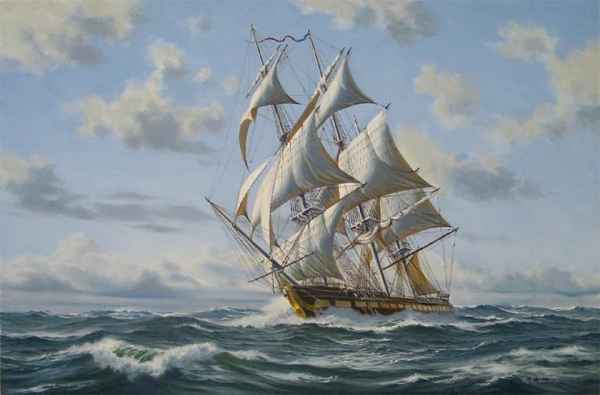
USS Constitution
1813 War of 1812: An Act to Encourage the Destruction of the Armed Vessels of War of the Enemy is approved by the US Congress:
Be it enacted by the Senate and House of Representatives of the United States of America in Congress assembled, That, during the present war with Great Britain, it shall be lawful for any person or persons to burn, sink, or destroy, any British armed vessel of war, except vessels coming as cartels or flags of truce; and for that purpose to use torpedoes, submarine instruments, or any other destructive machine whatever: and a bounty of one half the value of the armed vessel so burnt, sunk, or destroyed, and also one half the value of her guns, cargo, tackle, and apparel, shall be paid out of the treasury of the United States to such person or persons who shall effect the same, otherwise than by the armed or commissioned vessels of the United States.
[See: Countdown to Infamy: Timeline to Pearl Harbor.]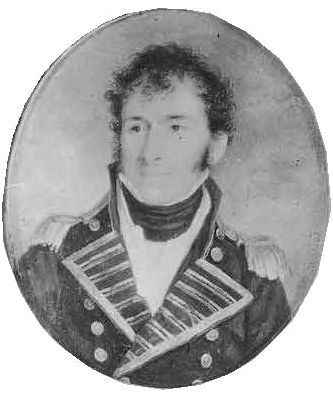
1815 Second Barbary War: The US Congress authorizes the deployment of a naval squadron of 10 warships against Algiers under the command of two veterans of the First Barbary War, Commodores William Bainbridge and Stephen Decatur, Jr (above). (Lambert)
1898 Birth: Emil Artin: Austro-German mathematician who worked in algebraic number theory, made a major contribution to field theory, and stated a law of reciprocity which included all previously known laws of reciprocity (1927). He also worked on the theory of braids (1925), and on rings with the minimum condition on right ideals, now called Artinian rings (1944). Artin has the distinction of solving (1927) one of the 23 famous problems previously posed by Hilbert in 1900. With his Jewish wife, he left Nazi Germany in 1937, and worked at universities in the US until 1956, when he returned to his home country.
1912 Volkishness: Wenn ich der Kaiser war! (If I were Kaiser!): appealing for the establishment of a dictatorship, the suspension of parliament; and denouncing the Jews. (THP)
All Reichstag and state parliament deputies, all party officials, all editors and publishers of socialist newspapers, all leaders of socialist trade unions‑-in short, all who stand in the service of socialist propaganda‑-shall be expelled from the German Empire. Of course, the same applies as well to all anarchists . . . . At the same time, society must do all it can to win the masses back to the fatherland. Public interest corporations will publish the most inexpensive daily papers in order to provide the people with de-toxified reading material. In this way the gap left by the suppression of the socialist press will be filled. Large-scale national meetings must be inaugurated through which the best people from all walks of life and the professions will work together for reconciliation. Holidays to celebrate the fatherland are to be instituted for the people.
1915 Birth of a Nation opens in New York:
Director D.W. Griffith's controversial Civil War epic The Birth of a Nation opens in New York City . . . a few weeks after its West Coast premiere in Los Angeles. A 40-piece orchestra accompanied the silent film. The movie, at 2 hours and 40 minutes, was unusually long for its day and used revolutionary‑-for the time‑-filmmaking techniques, including editing, multiple camera angles and close-ups. However, the film, originally entitled The Clansman, was denounced by the NAACP, among others, for its negative portrayal of African Americans . . . .
Based on a novel of the same name by Thomas Dixon, Griffith's career-making film depicted the white supremacist organization the Ku Klux Klan as a welcome force of order that arose amid the chaos of the post-Civil War era in the South. The later title change reflected Griffith's view that it was the Civil War—and specifically the victory of the Union over the Confederacy—that bound the collection of disparate American states into a true nation under one central authority.
From the moment of its release, The Birth of a Nation drew harsh criticism for honoring the Klan's historic role as a force of opposition to the Reconstruction-era idea that blacks could be successfully integrated into white society. Many historians disputed Griffith's view of history as a distortion that glamorized the violent actions of the Klan and demonized African Americans, completely discounting their valuable contributions during and after the Civil War and degrading the important efforts made during Reconstruction to grant former slaves civil rights and a role in government. The National Association for the Advancement of Colored People (NAACP) published a pamphlet denouncing the film, referring to it as "three miles of filth"
1917 Various:
World War I: August von Mackensen's Announcement about the Romanian Campaign:

The Rumanian declaration of war against Austro-Hungary on August 27, 1916, was followed on the next day by a declaration of war against Rumania by Germany. On August 29th, General von Falkenhayn was transferred from his position as Chief of the General Staff for "service elsewhere." In his new capacity as commander of the Ninth Army, von Falkenhayn immediately marched against the Rumanians who had crossed the mountains into Transylvania, drove them back, and during September wrested from them the Szurduk, Vulcan, and Red Tower passes. During October the Rumanians, helped by the Russians, put up a desperate resistance to von Falkenhayn's further advance, and the month was spent in heavy fighting with victory first for one side, then the other.
Russia: Manifesto of Grand Duke Mikhail Alexandrovich (following the abdication of Tsar Nicholas II, the previous day):
A heavy burden has been laid on me by my brother's will in transferring to me the imperial throne of All Russia at a time of unprecedented war and unrest among the people. Inspired by the thought common to the whole nation, that the well-being of our homeland comes above all, I have taken the hard decision to accept supreme power only in the event that it shall be the will of our great people, who in nationwide voting must elect their representatives to a Constituent Assembly, establish a new form of government and new fundamental laws for the Russian State. Therefore, calling on God's blessing, I ask all citizens of the Russian State to obey the provisional government which has been formed and been invested with complete power on the initiative of the State Duma, until a Constituent Assembly, to be convened in the shortest possible time on the basis of general, direct, equal, secret ballot, expresses the will of the people in its decision on a form of government.
1918 World War I: Various:

Russia makes a separate peace: Bolshevik Russia signs the Treaty of Brest-Litovsk with the Central Powers, abandoning the Allied war effort and granting independence to its Polish and Baltic territories, the Ukraine, and Finland.
Russia's disastrous involvement in World War I was a primary factor that led to Vladimir Lenin's successful Marxist revolution in November 1917. In December 1917, Germany agreed to an armistice and peace talks with Russia, and Lenin sent Leon Trotsky to Brest-Litovsk in Belarus to negotiate a treaty. The talks broke off after Germany demanded independence for Russian holdings in Eastern Europe, and in February 1918 fighting resumed on the eastern front. With German troops advancing on St. Petersburg, Lenin authorized the signing of the Treaty of Brest-Litovsk on March 3, 1918.
German leaders hoped that the formerly Russian territories would fall under their sway, but in November 1918 an armistice ended World War I, dooming Germany to demilitarization and Allied domination. In 1919, Soviet Russia regained the Ukraine in the Russian Civil War and in 1939 seized parts of Poland, and in 1940 the Baltics, following the signing of the Nazi-Soviet nonaggression pact. (History.com)
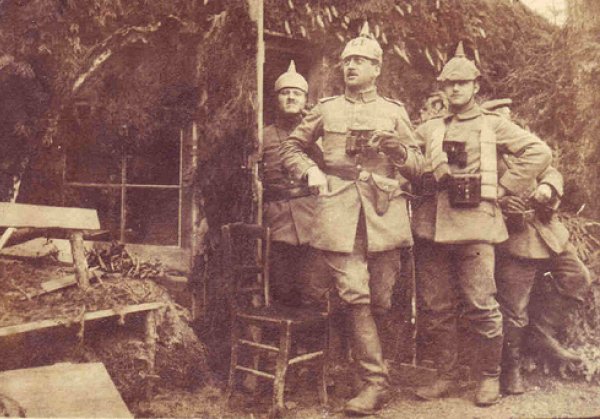
We all felt within us the approach of the long-desired peace. Peace—the tug of the homeland—already these thoughts in themselves gave us courage and the confidence to endure patiently the few months that the war on the battlefields of France would perhaps still last. With songs of home on their lips again for the first time in years, the fighting battalions of the glorious List Regiment pushed on.
1931 The Star-Spangled Banner becomes official: President Herbert Hoover signs a congressional act making "The Star-Spangled Banner" the official national anthem of the United States.
On September 14, 1814, Francis Scott Key composed the lyrics to "The Star-Spangled Banner" after witnessing the massive overnight British bombardment of Fort McHenry in Maryland during the War of 1812. Key, an American lawyer, watched the siege while under detainment on a British ship and penned the famous words after observing with awe that Fort McHenry's flag survived the 1,800-bomb assault.
After circulating as a handbill, the patriotic lyrics were published in a Baltimore newspaper on September 20, 1814. Key's words were later set to the tune of "To Anacreon in Heaven," a popular English song. Throughout the 19th century, "The Star-Spangled Banner" was regarded as the national anthem by most branches of the U.S. armed forces and other groups, but it was not until 1916, and the signing of an executive order by President Woodrow Wilson, that it was formally designated as such. In March 1931, Congress passed an act confirming Wilson's presidential order, and on March 3 President Hoover signed it into law. (History.com)
1932 Far East: Shanghai Provocation: Chinese forces are driven from Shanghai by Japanese attacks.
1933 Various:
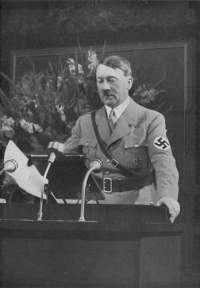
Nazi Germany: Adolf Hitler tells a large audience in Frankfurt that he 'will not be crippled by any bureaucracy. I won't have to worry about justice, my mission is only to destroy and exterminate.' (THP) [See: Is Nazi Efficiency a Myth?]
From a speech by Hermann Goering at a Nazi demonstration in Frankfurt:

Certainly I shall use the power of the State and the police to the utmost, my dear Communists, so you won't draw any false conclusions; but the struggle to the death, in which my fist will grasp your necks, I shall lead with those down there who are the Brown Shirts. [See: Was the German Military Complicit in the Holocaust?]
1936 Italy abolishes private banking:
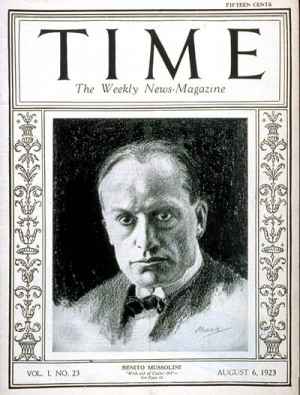
The difference between fascism and communism is that in communism, the state owns everything outright; in fascism, a thin veneer of private ownership is maintained while the state exercises absolute control over industry. So the biggest difference between communism and fascism, which are both state socialistic governments, is that communism is complete state ownership, while fascism is complete state control. In economic and political effect, both are remarkably similar, and both oppose true free markets.
1943 London: During a German aerial attack on London, 173 people are killed in a stampede while trying to enter Bethnal Green tube station, used as an air-raid shelter. [For further info click here.
1944 World War II: Stalin to Churchill:

Now that I have read the detailed record of your conversations with the leaders of the Polish emigre Government, I am more convinced than ever that men of their type are incapable of establishing normal relations with the USSR . . . . I have already written to the President that the time is not yet ripe for a solution of the problem of Soviet-Polish relations. I am compelled to reaffirm the soundness of this conclusion.
1945 World War II: Various:

Finland declares war on Germany: Under increasing pressure from both the United States and the Soviet Union, Finland finally declares war on its former partner, Germany
After the German invasion of Poland, the USSR, [needed] to protect Leningrad more than ever from encroachment . . . even [by] its dubious Nonaggression Pact partner Germany. [The USSR] began demanding control of various disputed areas from Finland, including part of the Karelian Isthmus (the land bridge that gave access to Leningrad). Finland resisted the Soviet pressure. Soviet Premier Joseph Stalin responded by enacting the "small print" of the Molotov-Ribbentrop Nonaggression Pact the USSR had signed with Germany back in August, which gave the USSR free reign in its "sphere of influence." The Soviets invaded Finland on November 30, 1939. (Stalin claimed that Finnish troops opened fire on Soviet troops.)
The Finns stunned everyone by beating back the initial Soviet offensive. Although their resistance consisted of only small numbers of trained soldiers (on skis and bicycles!) the refusal to submit made headlines around the world. President Roosevelt quickly extended $10 million in credit to Finland, while also noting that the Finns were the only people to pay back their World War I war debt to the United States in full. But by the time the Soviets had a chance to regroup and send in massive reinforcements, the Finnish resistance was spent. In March 1940, negotiations with the Soviets began, and Finland signed the Treaty of Moscow, which handed over control of the Karelian Isthmus.
As tension increased between Germany and the USSR, Finland saw in Hitler a possible ally in gaining back its lost territory. German troops were allowed on Finnish soil as the Germans prepared for their invasion of the Soviet Union: a war that the Finns joined. Although Finnish troops captured large areas of East Karelia back from the Soviet Union, they were reluctant to trespass the old borders of 1939 and help Germany in the siege of Leningrad.
But repeated German setbacks resulted in putting the Soviet Union on the offensive again. Shortly after the Red Army broke through to the Karelian Isthmus in June 1944, the Finnish president, Risto Ryti, resigned. (Around this same time, the United States broke off relations with Finland after repeated demands that Ryti renounce his alliance with Germany were rebuffed.) Ryti's successor, Gustaf Mannerheim, immediately sued for an armistice with the Soviet Union. This was signed on September 19, 1944; Finland agreed to the terms of the 1940 Treaty of Moscow and to throw all German troops off Finnish soil. The final act of capitulation came on March 3, 1945, with a formal declaration of war against the already dying Germany.
Manila is secured by the Americans:
Postwar analysts declared that next to Warsaw, Manila was the Allied city that suffered the most devastation in World War II. Civilian casualties, earlier attributed to Japanese atrocities, were found to also have been caused by the heavy artillery attack by the Americans. And it was this relentless assault that destroyed historic landmarks south of the Pasig river. It is also said that the strategy of avoiding unnecessary loss of lives of American GI's was employed in Manila as it later was in Hiroshima and Nagasaki. The logic of this strategy is debatable and one's position on the subject largely depends on one's point of view.
Holocaust: Some 2,000 Jews, evacuated from Gross Rosen concentration camp, arrive at Ebensee, one of the satellite camps of Mauthausen. 182 die during the disinfection procedure. (THP) [See: Was the Holocaust Detrimental to Hitler's War Effort?]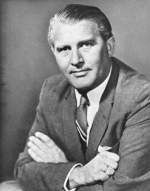
1947 Wunderwaffen: A story announcing Werner von Braun's marriage appears in the El Paso Herald Post: Story of Wernher von Braun's marriage, encompassing his experience in rocket development in Germany and his family background. (Piszkiewicz) Note: Werner von Braun, Hitler's former chief rocket scientist, is now working for the US. [See: Wunderwaffen: Hitler's Deception and the History of Rocketry.]
1952 Cold War: Supreme Court rules on Communist teachers:
In a 6-3 decision, the U.S. Supreme Court upholds a New York state law that prohibits communists from teaching in public schools. Coming at the height of the Red Scare in the United States, the Supreme Court decision was additional evidence that many Americans were concerned about possible subversive communist activity in their country.
The New York state statute (the Feinberg Law) banned from the teaching profession anyone who called for the overthrow of the government; the law was specifically aimed at communists. Several other states adopted similar measures. In New York, a group of teachers and parents challenged the law, and eventually the case went to the Supreme Court. The majority decision upholding the Feinberg Law, declared The New York Times, supported the belief that "the state had a constitutional right to protect the immature minds of children in its public schools from subversive propaganda, subtle or otherwise, disseminated by those 'to whom they look for guidance, authority and leadership.'" The dissenting opinion from justices William O. Douglas, Hugo Black, and Felix Frankfurter charged that the New York statute "turns the school system into a spying project." In New York, the Teachers Union vowed to continue fighting the law. Eight teachers had already been dismissed under the provisions of the law and as many others were facing hearings.
The Supreme Court decision was a barometer of the national temper. In the years preceding the case, former State Department official Alger Hiss had been convicted of perjury in connection with his testimony concerning his involvement with the Communist Party; Julius and Ethel Rosenberg had been convicted and sentenced to death for passing atomic secrets to the Soviets; and Senator Joseph McCarthy had made a career out of searching for communists in the U.S. government. By 1952, many Americans were convinced that communist agents and supporters were actively at work within the United States, and that their forces permeated every aspect of American life. The Feinberg Law remained in force until another Supreme Court decision in 1967 declared most of its provisions unconstitutional. (History.com)
2009 Super-luxurious Maybach Zeppelin goes on sale with a starting price of $523,870 for the Maybach 57 Zeppelin and $610,580 for the Maybach 62 Zeppelin.
Daimler-Benz, owner of the Maybach brand, announced that only 100 Zeppelins would be built, with each vehicle hand-crafted to its individual buyer's specifications. Among the Zeppelin's many optional amenities was the world's first perfume-atomizing system, for which customers could even have their own personal fragrance designed.
The 2009 Maybach Zeppelin was a reincarnation of the Zeppelin auto built in the late 1920s and early 1930s. The original Zeppelin was made by a company founded by German auto industry pioneer Wilhelm Maybach. In 1885, Maybach and the German engineer Gottlieb Daimler developed a new, high-speed, four-stroke internal combustion engine, which they later affixed to a bicycle to create what people call the first-ever motorcycle. The two men later attached their engine to a carriage, producing a motorized vehicle. In 1890, Daimler and several partners established Daimler Motoren Gesellschaft (Daimler Motor Company) to build engines and automobiles. In 1900, Maybach, who served as the company's chief designer, developed the first Mercedes automobile. Commissioned by auto dealer and racer Emil Jellinek, who wanted a new car to sell to his rich clients in the French Riviera, the Mercedes was named after Jellinek's daughter.
Gottlieb Daimler died in March 1900 and Maybach left the Daimler company in 1907. Maybach later went into business with his engineer son Karl (1879-1960) and in 1921 at a Berlin auto show . . . their first car, the Maybach Type W3 [made its debut]. During the 1920s and 1930s, the company became known for developing powerful, technologically sophisticated, custom-built vehicles for the wealthy, including the top-of-the-line Zeppelin model. Wilhelm Maybach died on December 29, 1929, at the age of 83.
During World War II, the company stopped making cars and built engines for German military vehicles instead. Auto production never resumed after the war, although Maybach continued to build engines for a variety of vehicles and eventually became part of Daimler-Benz. In the early 2000s, DaimlerChrysler (as it was then called; since 2007 its name has been Daimler AG) resurrected the Maybach nameplate, launching the Maybach 57 and the Maybach 62 (the numbers represent each vehicle's length: 5.7 meters and 6.2 meters). Today, Maybachs are known for their power and luxury accoutrements—the 2009 Zeppelin featured a twin turbocharged 6.0-liter V12 engine as well a high-quality leather interior and silver champagne flutes engraved with the word Zeppelin. [See: The Fuehrer's Mercedes.]
Edited by Levi Bookin (Copy editor)
levi.bookin@gmail.com







Click to join 3rdReichStudies


FAIR USE NOTICE: This site may contain copyrighted material the use of which has not always been specifically authorized by the copyright owner. We are making such material available in our efforts to advance understanding of historical, political, human rights, economic, democracy, scientific, environmental, and social justice issues, etc. We believe this constitutes a 'fair use' of any such copyrighted material as provided for in section 107 of the US Copyright Law. In accordance with Title 17 U.S.C. Section 107, the material on this site is distributed without profit to those who have expressed a prior interest in receiving the included information for research and educational purposes. If you wish to use copyrighted material from this site for purposes of your own that go beyond 'fair use', you must obtain permission from the copyright owner.
Please note that the list-owner and the moderator are not responsible for, and do not necessarily approve of, the random ads placed on our pages by our web server. They are, unfortunately, the price one pays for a 'free' website.